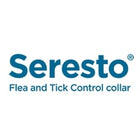
If your cat shows unusual skin issues, it could be a sign of ringworm. While the name might sound alarming, there’s no need to panic—ringworm is a common fungal infection completely treatable. With the proper care, your feline friend will be on the path to recovery quickly.
Despite its name, ringworm has nothing to do with worms. It’s a skin condition caused by a fungus that creates circular, ring-like patches on your cat’s skin. Because ringworm is highly contagious and can spread to humans and other pets, recognizing the symptoms early and starting treatment promptly is essential.
We’re here to guide you through everything you need to know about ringworm in cats—from identifying the signs to exploring treatment options. Let’s get started!
What is Ringworm in Cats?
Ringworm, also known as dermatophytosis, is a highly contagious fungal infection that affects a cat's skin, hair, and nails. Despite its name, ringworm isn’t caused by a worm but by a group of fungi that live on the skin's surface. This infection often appears as red, circular patches on the skin, especially around areas with hair and nails.
Although ringworm isn’t life-threatening, it can cause significant discomfort for your cat and quickly spread to other pets and even humans. While cats of all ages can be affected, kittens are especially vulnerable due to their developing immune systems. Identifying and treating this common skin condition early is essential to stopping its spread.
How Do Cats Contract Ringworm?
Cats can become infected with ringworm through direct contact with an affected animal or by interacting with contaminated objects like bedding, grooming supplies, or furniture. The infection can spread rapidly in homes with multiple pets since fungal spores are easily transferred through shed hair and skin.
Kittens are particularly vulnerable due to their immature immune systems, which makes them more prone to infections. Long-haired cats also face a higher risk as the fungus can get trapped in their thick fur, making it more difficult to spot and treat. Maintaining regular grooming routines and practicing good hygiene are pivotal steps in minimizing the risk of ringworm in cats.
Common Signs of Ringworm in Cats
Ringworm in cats can sometimes be easy to spot, but in other cases—especially with long-haired cats—it may be harder to detect without a professional diagnosis. Veterinarians typically look for the following signs when diagnosing ringworm:
- Flaky or scaly skin and coat
- Red, inflamed areas of the skin (erythema)
- Circular, thickened patches on the skin
- Patchy hair loss with crusty or brittle skin
- Infected claws (onychomycosis), causing them to appear rough, brittle, or scaly
It’s important to note that some cats can carry the ringworm fungus without showing any visible symptoms. Even though these cats appear healthy, they can still spread the infection to other pets and humans if left untreated. Routine veterinary visits and timely treatment are crucial in controlling the spread of ringworm.
How is Ringworm Diagnosed in Cats?
To diagnose ringworm in cats, veterinarians may use a combination of tests. This can include examining your cat’s fur under a special UV light (Wood’s lamp), taking a sample of hair or skin for microscopic analysis, or, in some cases, performing blood tests. However, the most accurate method is collecting coat-brushing samples and sending them to a lab for fungal culture testing. While this approach provides the most reliable results, it may take up to two weeks to confirm the diagnosis.
Effective Ringworm Treatment for Cats
Treating ringworm in cats typically involves a combination of antifungal medications and medicated shampoos. Your veterinarian might prescribe oral antifungal drugs and topical treatments to target the infection directly on the skin. For long-haired cats, trimming the fur may be recommended to help the medicated shampoo reach the skin more effectively.
To prevent the infection from spreading, your vet may suggest isolating your cat in easy-to-clean rooms, as fungal spores can quickly contaminate your home. In addition to treating your cat, thorough home decontamination is crucial. This includes daily vacuuming of furniture, carpets, and floors and mopping hard surfaces with pet-safe disinfectants. Wash or replace bedding, toys, and grooming tools, as these can harbor spores. Items that can’t be cleaned thoroughly should be discarded to prevent reinfection.
Ringworm spores can survive in your home for up to 18 months, making consistent cleaning essential to eliminate the infection. If you have other pets, consult your vet to determine whether they also need treatment, even if they don’t show symptoms. It’s important never to use medications prescribed for one pet on another, as this can be harmful, especially across different species.






